Pretrichial Brow Lift
What is a pretrichial brow/forehead lift?
A pretrichial brow lift elevates and tightens not just the eyebrows, but the entire forehead. This results in improved eyebrow position, reduced forehead wrinkles, and reduces heaviness of the glabella (skin between the eyebrows).
Why do patients get pretrichial brow lifts?
As we age, the forehead often descends. This causes sagging of the eyebrows and glabella (heavy skin between the eyebrows). Drooping eyebrows can make people look sad or mad when they are not! Drooping eyebrows can also make the eyelids look heavier and puffier.
Sometimes patients come to see us for an eyelid lift, but together we discover that the brows are the problem and the eyelids may be just fine!
What happens during a pretrichial brow lift surgery?
During this surgery, an incision is made just a few millimeters behind the front of the hairline. The incision is beveled at an angle to encourage hair to grow through the scar and help hide it. Loose skin is gently elevated and the amount of excessive skin is carefully measured and removed. Each patient has unique needs and your surgeon will examine the amount of lift needed to achieve your goals. The incision line is meticulously sutured closed (no staples) to help achieve the best scar possible.
Is there any visible scarring? How long will the scarring last?
The scar is located in the very front hairs of your hairline. At first, the scar looks pink and is sometimes slightly elevated. Over the next few months the pink coloration begins to fade. In most patients it is substantially faded by 6 months and typically takes on the appearance of a fine white line. Often, hair will grow through the scar to help hide it.
Dr. Nicole Langelier
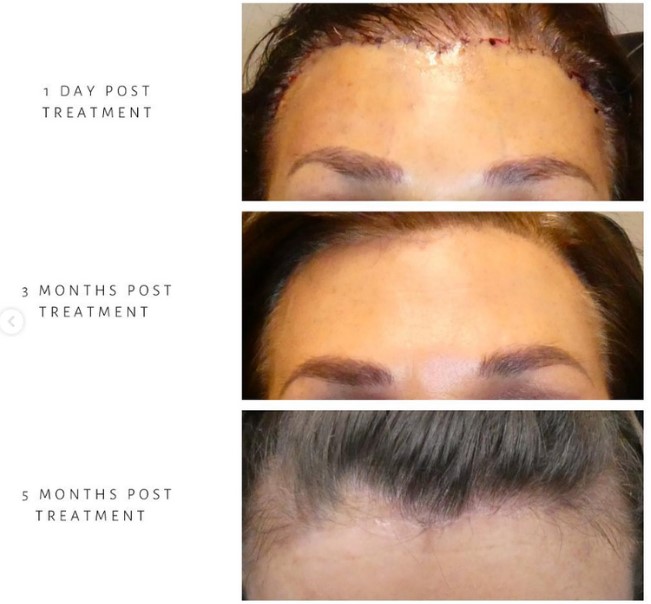
Dr. Nicole Langelier
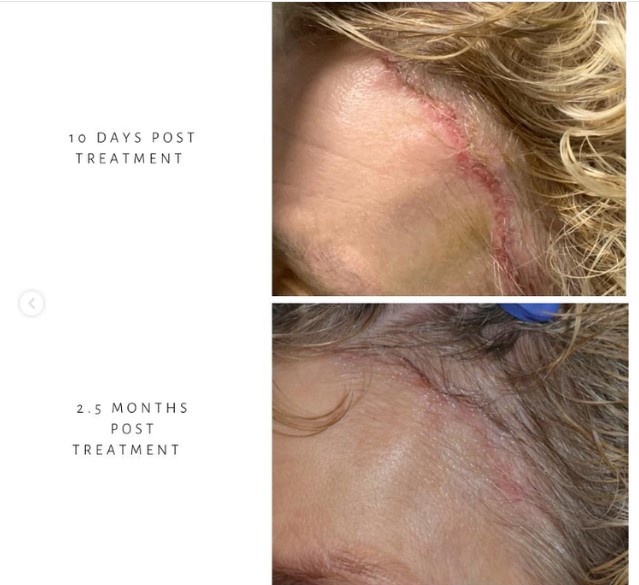
What is the recovery like following the surgery?
Immediately after surgery, patients often describe the discomfort of a dull headache. A maximal dose of extra strength Tylenol is often sufficient to control the discomfort. Anyone experiencing more pain than can be controlled with their recommended post-operative medications should contact their surgeon immediately. Numbness is expected after the surgery and is usually located in the hair behind the incision and sometimes in the forehead. Numbness typically improves at 6 months. Some patients note a small patch of remaining numbness that does not fully resolve. This technique preserves the deep branches of the sensory nerves which results in good sensory recovery for most patients.
A rare risk of surgery includes loss of blood flow to the skin which could result in scarring. Smokers, patients with poorly controlled diabetes and some autoimmune diseases may not be good candidates for this surgery.
What kind of results can be expected from this surgery?
The result is a natural looking lift to the upper face. While this surgery is often combined with an upper eyelid blepharoplasty, just doing the brow lift alone will improve the appearance of eyelid heaviness and puffiness by elevating the sagging brow tissues.
Dr. Nicole Langelier
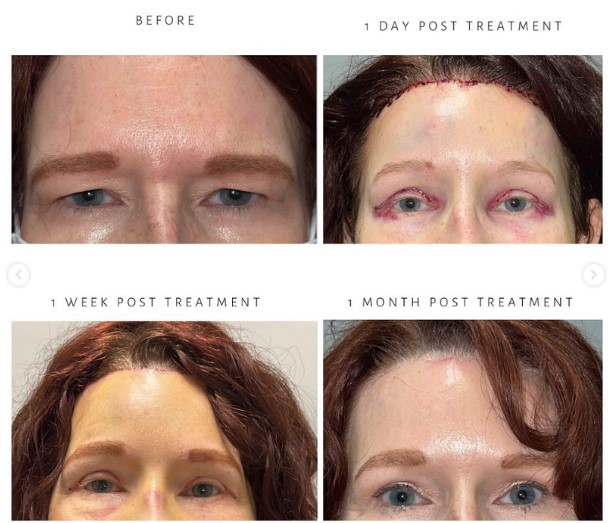
Dr. Nicole Langelier
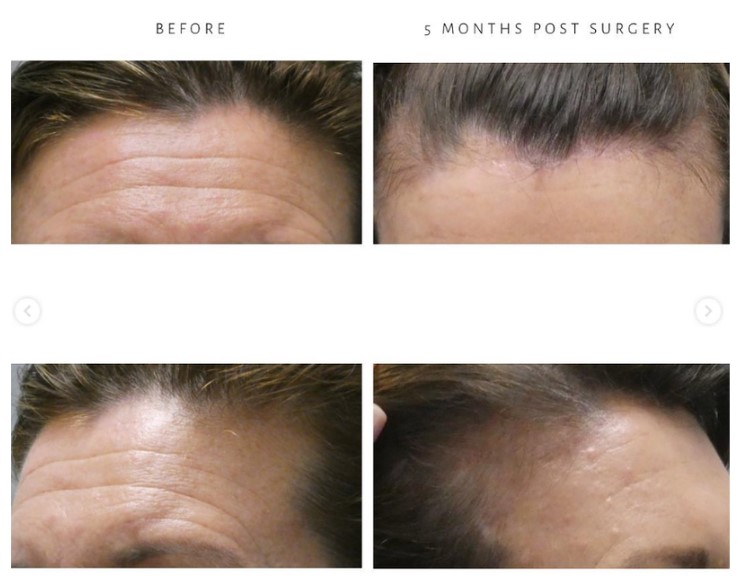
When should I consider a pretechial brow/forehead lift?
Drooping brows can be cause by age, a neurologic problem (such as Bells Palsy) or trauma (injury to the brow or forehead). You should consider undergoing a brow/forehead lift if:
- Your eyelids feel heavy all the time
- Your peripheral vision is blocked
- You look angry all of the time
- You feel like you looked more aged than you actually are
If you experience any of these aforementioned issues, consider contacting us to set up a consultation with one of our board-certified oculofacial plastic surgeons.
For more information on post-operative care, click here. Disclaimer that it is general information and not medical advice. You will receive your own customized instructions from our providers.
For before and after pictures of our pretrichial brow lift procedure, click here.
Dr. Nicole Langelier
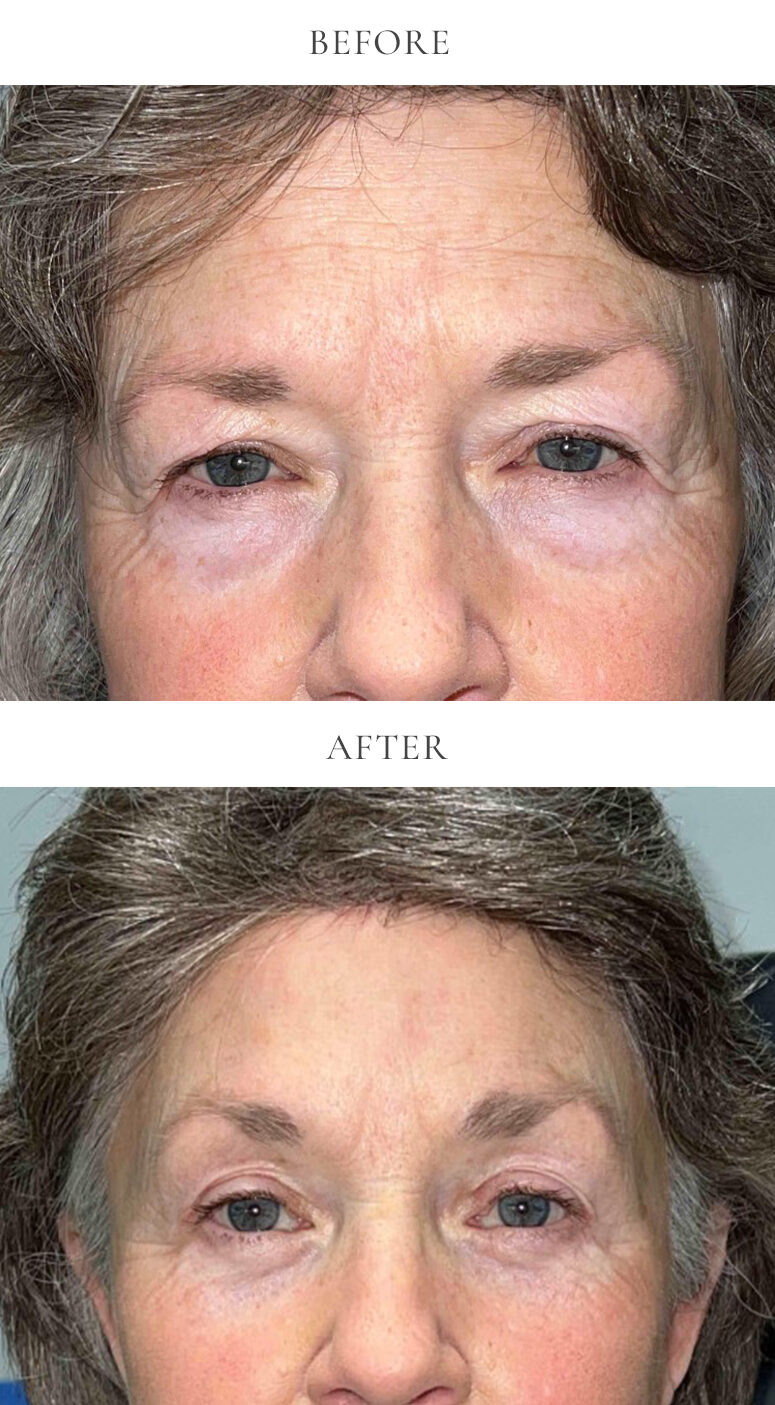
Upper Eyelid Blepharoplasty, Pretrichial Brow Lift, Lower Eyelid Blepharoplasty, Lower Eyelid Laser Resurfacing
Dr. Nicole Langelier
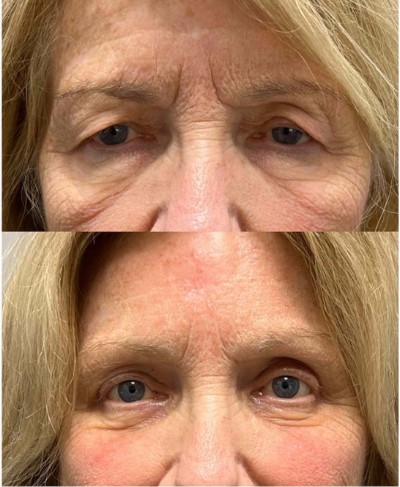
Bilateral Upper Eyelid Blepharoplasty, Ptosis Repair, Pretrichial Brow Lift, Lower Eyelid Blepharoplasty, Lower Eyelid Laser Resurfacing
Dr. Nicole Langelier
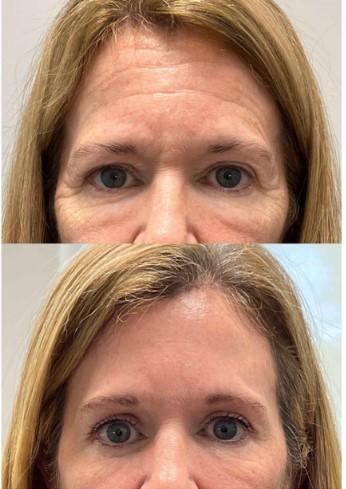
Bilateral Upper Eyelid Blepharoplasty, Pretrichial Brow Lift with Laser Resurfacing
Gallery |
"*" indicates required fields
